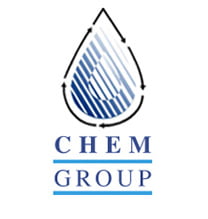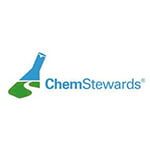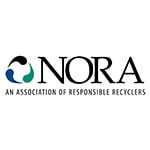When cold weather approaches, it’s time to give your car a once-over to make sure it’s fully prepared for the drop in temperature.
With all of the external features that need to be checked, such as the lights, windshield wipers, and tires, it’s easy to forget to make sure your cars cooling system is topped off and running properly.
Not using the right coolant or the correct proportion of antifreeze can easily lead to serious engine issues.
So what is antifreeze and how can we use it properly to protect our cars?
Continue reading to know everything about this viscous fluid that offers much-needed protection to the insides of your car.
What is antifreeze?
A glycol-based fluid made primarily from ethylene glycol or propylene glycol, antifreeze is one of the components of the fluid used in the cooling system of your car.
Ethylene glycol replaced glycerol as the mainstream antifreeze around 1926, and had it not been for its extremely toxic nature, it would still be the undefeated champion.
But after the sweet-smelling and tasting liquid was implicated in dangerous and often fatal toxicity in pets and children, manufacturers have started offering a less toxic alternative in the form of propylene glycol-based antifreeze solutions.
Apart from glycol, antifreeze mixes also have pH buffers that maintain the alkalinity of the solution and anti-corrosive compounds that prevent the degradation of the metallic components of the cooling system.
What does antifreeze do?
Think of antifreeze as the temperature control fluid in the vehicle.
All internal combustion engines, like the one that sits under the hood of your car, generate a tremendous amount of heat.
Unless the rise in temperature is controlled, the precision components of the engine, which are made of rubber, metal and plastic, will get damaged, leading to catastrophic engine failure.
The heat can be kept in check by circulating air or a liquid around the engine block.
Air-cooled engines long fell out of favor, due to emissions regulations.
So, liquid-cooled engines are now the only options available, and that led to the birth of antifreeze.
1. Where water fails, antifreeze works:
Water is an excellent coolant for engines, but it begins to boil at 212 degrees F, and this temperature is easily reached in an operational engine.
Once water begins to boil, it turns into steam, which puts pressure on the radiator and hoses.
Plus, as steam escapes out of the system, the water level drops significantly, which can lead to overheating.
If that’s not enough, water freezes at 32 degrees F.
So, in areas where temperatures drop below freezing, the force with which water freezes can cause the hoses and radiator to rupture.
2. Dual protection with antifreeze:
On one end of the spectrum, antifreeze lowers the freezing point of water in the coolant mixture, thus preventing it from freezing inside the radiator, the water pump and hoses.
On the other end, it raises the boiling point of the water in the coolant mix, giving it greater cooling capacity.
That is why using coolant is the best solution for keeping your car running at a stable temperature.
3. So much more than just temperature control:
Another problem with water is the fact that it can quickly lead to the corrosion of all metallic components in the engine, including iron and aluminum parts.
Because antifreeze mixes contain anti-corrosive elements they prevent this degradation.
Plus, these products also contain components that slow down organic contamination or bacterial buildup, which would be considerably faster if only water were used as the coolant.
The difference between antifreeze and coolant
Now, you may have noticed that the terms “antifreeze” and “coolant” have been used interchangeably so far in this article.
That’s because coolant is simply a pre-mixed solution of antifreeze and water; typically, in the proportion of 50-50 or 70-30.
Because the coolant already contains water, you don’t need to dilute these products before use.
However, antifreeze has to be mixed with water before it can be used.
Don’t worry about getting the two mixed up, the labels on the bottle will clearly state what you have just purchased.
And the different types of antifreeze/coolant are color-coded for your convenience as well.
The different types of antifreeze
In terms of the major component, antifreeze mixes are available in the standard ethylene glycol-based form or the non-toxic propylene glycol-based version.
But, that is not the main difference.
The primary variation in antifreeze solutions is based on the anti-corrosive factors used in them.
Up until the mid-nineties, ethylene glycol-based, bright green antifreeze mixes were the norm.
However, newer vehicles and their advanced engine components raised the need for more effective antifreeze solutions that would offer greater protection.
This led to red, green, blue, yellow and orange fluids.
Every one of these is meant to address the specific requirements of various engines and their components.
So, you will find coolants and antifreeze solutions from nearly all major auto manufacturers that are designed to handle the anti-corrosive needs of the engines in their vehicles.
When selecting the fluids for your car, it’s always a good idea to consult your owner’s manual first to see what your car’s manufacturer recommends.
Why is antifreeze different colors?
Both ethylene and propylene glycol are colorless fluids and the anti-corrosive compounds and other additives wouldn’t make much of a difference to their colorless form.
However, given the variation in antifreeze solutions, manufacturers add colors to these mixes, so that it can be easy to differentiate one kind from another.
Basically, coolants come in 3 types:
1. Inorganic acid formula (IAT):
Used in all cars till the early nineties, this is your basic bright green coolant that is still poured into all older cars manufactured before the mid-nineties, including all domestic vehicles from Ford, GM and Chrysler.
Made by adding phosphates and some amount of silicates to glycol, these low-silicate, conventional antifreeze solutions also have supplemental coolant additives (SCA) in them to protect the engine lining from corrosion.
In fact, it’s the SCA that are the first components of the coolant to get exhausted.
So, these older green fluids need a change every 2 years or 25,000-30,000 miles.
2. Organic acid technology (OAT):
These coolants turned into the norm around the late-nineties and are still going strong in many newer cars all across the world.
Although devoid of both phosphates and silicates, OAT coolants offer similar corrosion resistance as the green antifreeze mixes.
But the anti-corrosive compounds in these solutions are slow-acting, which gives the product a longer life span.
Also, it is specifically designed to offer anti-corrosive protection to the aluminum and nylon parts in newer model cars.
Originally marketed as “permanent” or “long life” antifreeze, OAT coolants, or Dex-cool as they are commonly known, have to be replaced every 3-5 years.
Another important difference is that unlike IAT coolants, OAT products use propylene glycol as the base, so they are less harmful for pets, kids and the environment in case of a spill or boil-over.
OAT antifreeze mixes are usually orange, yellow or red but also comes in other colors, such as blue, red and very dark green, depending on the variant and the manufacturer.
These coolants are widely available and used in most GM cars and trucks manufactured after 1995 as well as in vehicles manufactured between 1996 and 2001 by Audi, Honda, Jaguar, Kia, Land Rover, Mazda, Nissan, Porsche, Saab, Toyota and VW.
3. Hybrid organic acid technology (HOAT):
As their name suggests, these coolants combine the best of IAT and OAT products to offer superior corrosion resistance for aluminum parts and rustproofing for iron components.
Typically, dyed yellow or orange, HOAT products are also available in a range of other hues such as pink, purple and blue.
HOAT products are usually referred to as “global” and you will almost always find a label on the packaging which reads, “Meets or exceeds G-05 specifications”.
These antifreeze mixes need to be changed every 5 years and are specified for most cars manufactured after 2002 by Audi, BMW, Chrysler, Ford, Mercedes, Saab, Volvo and VW.
As you may have noticed, color is certainly not a reliable indicator of the type of coolant that you are getting.
The only thing that the different hues are good for is to prevent the inadvertent mixing of two types of products.
So, always read the bottle’s description and match it with coolant specified in the owner’s manual of your vehicle.
If the bottle description has you stumped, don’t take the risk of adding any odd coolant to the reservoir.
Instead, take the trouble of checking with the local mechanic or repair shop.
This may cost you a few bucks, but it will certainly be less expensive than a complete engine overhaul.
Can you mix antifreeze colors?
In short: no, you cannot mix different types of antifreeze mixes.
In fact, HOAT coolants are available in at least 3 variants (Silicated HOAT, Phosphated HOAT and Phosphate-free HOAT), and you shouldn’t be mixing together even the variants, let alone the main classes.
Mixing the green with the orange or orange with the blue/yellow, etc. will lead to a chemical reaction in the reservoir.
This causes the formation of brown, gelatinous sludge in the reservoir and the radiator that can completely block the cooling system over time.
Where do you put antifreeze?
The antifreeze reservoir is fairly easy to locate under the hood.
It is a semitransparent, white container made of thick plastic.
It is placed on the side of the engine and usually has a plastic or metal cap.
You may also see a warning symbol on top of the cap that tells you to not open the lid while the engine is running or hot.
Plus, the reservoir holds a colored liquid in it, so if you can’t find the cap, look for the reservoir and then follow the hoses to the radiator/cap.
You can also consult your owner’s manual which should contain a diagram of the location of your cap if you cannot find it.
Dunking coolant into the engine oil or washer fluid tank can be a very expensive mistake, so it is best to be cautious.
How often should you change your antifreeze?
Whether it’s made of ethylene glycol or propylene glycol, in itself antifreeze does not expire.
However, the anti-corrosive factors in it do eventually wear down, and that is when you need a change.
As discussed above, IAT coolants have the shortest lifespan of about 2 years, while both OAT and HOAT offer about 5 years.
However, even before you hit these marks, your car may give you signs that it needs a coolant change. These include:
The coolant light coming on: This indicator points to low coolant levels as well as the engine running too hot. Usually, this results from a coolant leak and should be checked.
Higher than normal temperature on the gauge: If your engine is operating at the optimal temperature, the needle of the gauge will be in the normal range. If the needle is moving upward or downward, it’s an indicator of a compromised cooling system.
The tell-tale puddle of colored fluid: If your car leaves behind a colored puddle on the driveway, this is a dead giveaway of a coolant leak. Remember that such puddles have to be cleaned before you do anything else because they are highly toxic to both humans and animals (more on this coming up).
Sweet smell: Although not as obvious an indicator as the puddle of coolant on the driveway, a sweet smell around the car (inside or outside) can also point to coolant leakage.
Non-working heater: The heater works off the same coolant as the engine of the vehicle. In case of a leak, there obviously won’t be enough coolant to go around, and the heater will be the first to give way.
Even if these signs don’t show up, it is good practice to test the condition of the coolant periodically with chemical strips.
These are affordable and easy to use, not very different from a simple litmus test.
If they indicate that the coolant has gone acidic, it is time for a change.
How often should you check your antifreeze levels?
The answer to this question will vary based on whom you ask.
Most automakers and aftermarket coolant manufacturers ask you to check coolant levels every time you refuel or at least once every two weeks.
At the minimum, you should check the coolant level once every 6 months, i.e. before summer and before winter.
It does not take more than a minute or two to check the coolant level in the reservoir.
If you look closely, you will find the maximum and minimum level marks on the body of the reservoir, to the side.
Because the tank is made of semi-translucent plastic and the coolant is colored, you can often check the level of the solution without opening the cap.
If the fluid level is below the max line, this could be due to natural and gradual loss.
All you need to do, in this case, is top up with the manufacturer’s recommended coolant and wait till your next scheduled check.
But, if the level has gone below the minimum mark, you need to top up the reservoir and check it on a daily basis for a few days.
If the level dips below the max line every time you check to the point where you need to top up every day, this may be attributed to a leak in the system.
How to dispose of antifreeze?
Ethylene glycol antifreeze is highly toxic in all forms of exposure (fumes, skin contact, and ingestion).
Plus, coolants pick up heavy metal contamination as they get circulated through the vehicle’s engine.
So, whether it is a boil-over of the coolant in the reservoir/radiator, a spill of unused antifreeze or disposing of the used coolant, you need to be extra cautious.
Because you cannot just flush antifreeze down the drain/sink or toilet nor can it be poured into the soil, it is highly recommended that you allow a repair shop to handle the flushing of the cooling system.
This way, you won’t have to bother with the disposal of the waste.
However, if you do intend to carry out the process at home, make sure that you wear protective clothing to prevent the fluid from coming into contact with your skin.
Also, do not forget to separately store contaminated and uncontaminated antifreeze.
Coolant that is mixed with gas or engine oil is deemed contaminated and it cannot be recycled at regular recycling facilities.
Once the liquid has been segregated as required and safely stored away from the reach of children and pets, get in touch with your State’s Waste Management Department to locate the nearest recycling (uncontaminated antifreeze) or hazardous chemical disposal (contaminated antifreeze) facility.
Earth911.com has a recycling locator that can be used to find the nearest recycling center.
All you have to do is use your zip code and the website will give you the addresses of all nearby facilities.
Conclusion
And with that, you now know what antifreeze is and just about everything else about these solutions.
The most important thing to remember, when using a coolant, is to follow manufacturer recommendations.
Using too much or too little antifreeze in the coolant mix isn’t going to get you anywhere.
Too much is just as bad as too little since it compromises the ability of the mixture to move through the system and hence hinders its cooling capacity.
For year-round use, 50-50 (antifreeze to water) is the ideal proportion while in winter, you may want to increase it to 70-30 (70% antifreeze).
Finally, although it is possible to use just water if you run out of coolant in the middle of nowhere, get your vehicle the coolant it needs as soon as you get to a gas station to prevent irremediable damage to the engine.
References
https://www.micksgarage.com/blog/everything-you-ever-needed-to-know-about-anti-freeze-and-coolant
https://www.total.co.uk/coolant-antifreeze-guide
https://www.agriland.ie/farming-news/workshop-focus-what-you-need-to-know-about-antifreeze/
https://dannysengineportal.com/antifreeze-coolant/
https://www.valvoline.com/our-products/antifreeze-products/antifreeze-education/engine-coolant
https://www.bestproducts.com/cars/parts/g1484/engine-coolant-antifreeze/
https://owner.ford.com/support/how-tos/vehicle-care/how-to-add-engine-coolant.html
https://www.bobvila.com/articles/how-to-dispose-of-antifreeze/
https://www.yourmechanic.com/article/how-to-safely-dispose-of-antifreeze
https://mobiloil.com/en/article/car-maintenance/car-maintenance-archive/what-is-coolant-and-how-to-dispose-of-coolant
https://www.hemmings.com/blog/2014/08/01/tech-101-the-colors-of-antifreeze/





